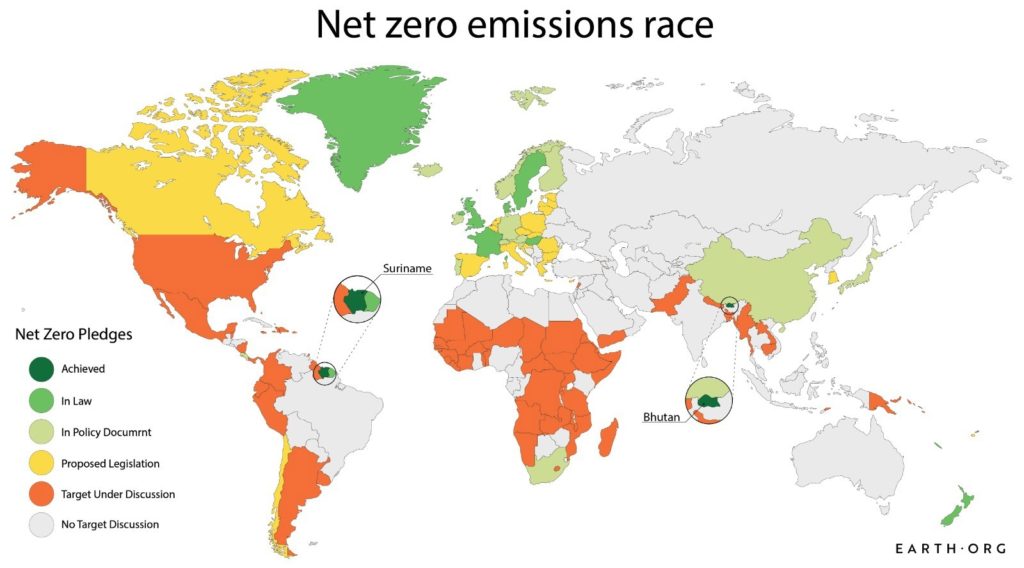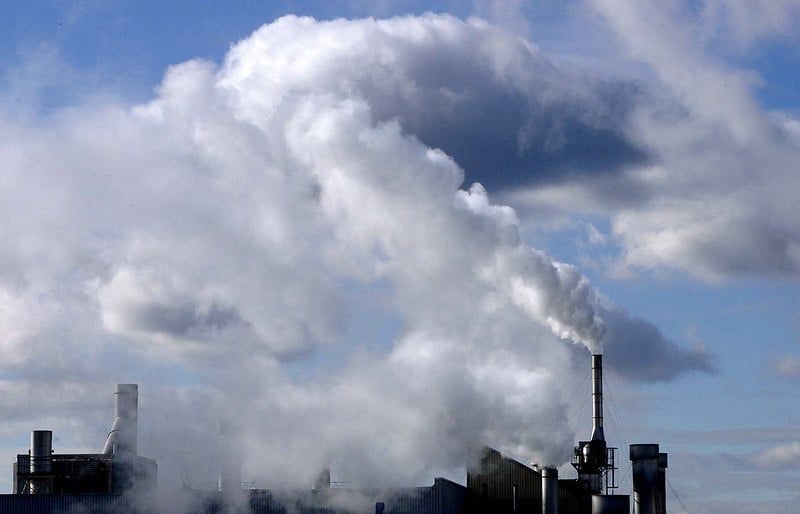Currently, more than 100 countries have pledged to get to net-zero emissions by 2050, according to the UK-based nonprofit Energy & Climate Intelligence Unit, while China has a 2060 goal. However, many of the targets set out by these countries are piecemeal and far above the actions being taken today. What do countries need to do to reach net-zero emissions?
—
Two countries- Bhutan and Suriname- are already carbon-neutral, but for bigger economies, the transition will be far more difficult, in many cases requiring massive structural and legislative reforms which will no doubt cause political tensions. At the World Economic Forum in late January, Jennifer Morgan, Greenpeace International’s executive director, said, “Oftentimes these commitments hide that there are no clear benchmarks or binding laws to achieve the targets—too often it’s more of an excuse to continue with destructive practices.”
Governments need to act decisively and effectively- vague promises won’t do. According to Climate Action Tracker, only seven countries and the EU have submitted stronger targets to cut emissions. However, according to the tracker, the EU’s plan to cut emissions 60% by 2030 is still not compatible with the Paris Agreement, while China, Brazil, Japan and Russia’s revised goals are all rated “Highly Insufficient.”
You might also like: Concerns Raised Over UN Climate Envoy’s Carbon Credits Plan

Countries’ progress in reaching net zero- achieved, in law, in policy document, proposed legislation, target under discussion and no target discussion (Source: Earth.Org).
This is why Earth.Org is launching a series where we will analyse countries’ actions, how they compare with their goals and whether this is compatible with the Paris Agreement.
According to Bloomberg, human emissions need to fall between 25% and 50% through 2030 to limit warming to 2 degrees Celsius by 2100. Last year, global carbon emissions fell 7% due to COVID-19-related lockdowns. However, a spike in emissions is expected as economic activity resumes. However, according to Michael Lamach, chief executive officer at Trane Technologies, one third of the world’s carbon emissions could be brought to zero with technology that already exists today.
To ensure that net-zero pledges are being followed, world leaders should implement shorter-term measures. Inger Andersen, executive director at the United Nations Development Program, says, “Making the promises of what we will do by 2050 is not good enough. We need to see the UN’s conventions translated into real action plans into what we do in 2021, 2022 and 2023, up until 2050.”
Certainly, record heat, biodiversity loss, extreme weather events and ice melting are all painful reminders that we are losing the fight against climate change. Our lives quite literally depend on world leaders taking decisive action to prioritise the health of the planet over the health of the economy.
Featured image by: Flickr

















